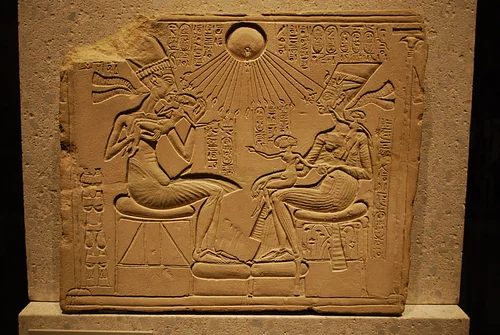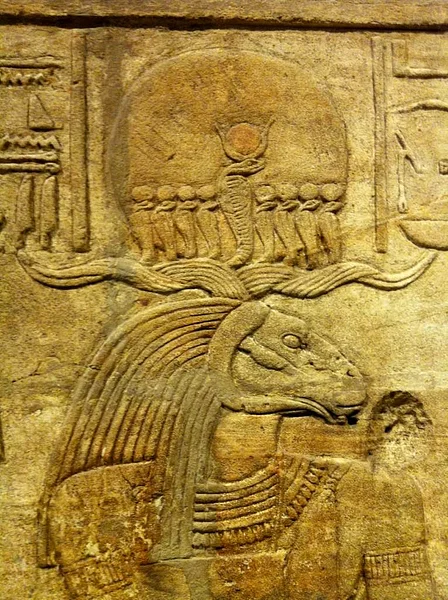Some or all of this article may be partially or totally true, but it's suspicious that the words 'fraud' or 'voter fraud' don't appear at all, not even to be ballyhooed. This is from Dailymail witch is promoting the 'dump Trump' meme, currently being forcefully circulated around in the msm, (in an off-hand, casual way, mind you).MEGHAN MCCAIN: Last night was the final nail in Trump's political coffin - because too many of his suck-up duds lost an unlosable election. Now is the moment for DeSantis to take charge of the ship
What the hell happened last night? The highly anticipated 'red wave' turned into a light pink ripple... at best.
This will go down as a giant warning sign and, hopefully, a convincing argument against the delusion that President Donald Trump is the future of the GOP.
Too many Republicans lost in an unloseable election last night, and they have no one to blame but themselves.

MEGHAN MCCAIN: Too many Republicans lost last night thanks to Trump
MCCAIN: The 'red wave' was a mirage. We can now see two clear pathways ahead. One leads to success and the other to failure for the GOP.www.dailymail.co.uk
You are using an out of date browser. It may not display this or other websites correctly.
You should upgrade or use an alternative browser.
You should upgrade or use an alternative browser.
Biden-Harris Administration: The Empire Strikes Back
- Thread starter Niall
- Start date
Couldn't help but notice the image behind Biden's left shoulder - apparently sun rising/dawn top half and an array of snakes bottom half?

Another view - stylized snakes?

I presume the curved line in the middle represents the earth/horizon - and yet, why are the last two brown lines closest to it sharply pointed and spaced out away from the formed circular boundary?
Here's the official explanation:
The logo mixes the African and Egyptian cultural identities. It depicts the African sun embracing the Sun of Aten, whose rays shine on a new horizon, announced the Egyptian Ministry in a statement on Wednesday.
Aten is a sun god worshiped during the era of Pharaonic King Akhenaten.
The ministry added that the sun is the source of life and a sign of hope, and one of the well-established symbols in the African culture. Sun rays extending over the horizon symbolize the renewal of hope for a better world.
“Its rays also symbolize the energy needed to sustain life. Meanwhile, the sun of Aten, with its rays ending with hands, expresses the generosity of nature that gives us means of living, luxury and prosperity. In the middle, a new horizon stretches to express hope for a better future,” the ministry said.
“The design of the logo stresses the importance of preserving the planet, as it is time for the international community to unite to work constructively against climate change, which is threatening humanity now more than ever,” the Ministry continued.
Sooo - hands not serpents - expressing the generosity of nature that gives us means of living, luxury and prosperity? Gee, a few billion of the common folk might disagree with that notion!
Interesting choice of Aten the sun god and the connection to Akhenaten [wiki excerpts plus Amun link]:

Amun depicted as a ram-headed man with a double plume.

He is usually depicted as a bearded man wearing a headdress with a double plume or, after the New Kingdom, as a ram-headed man or simply a ram, symbolizing fertility in his role as Amun-Min. His name means "the hidden one," "invisible," "mysterious of form," and unlike most other Egyptian gods, he was considered Lord of All who encompassed every aspect of creation.
Well, seems like a very odd choice to use as a logo - or maybe not.
“The design of the logo stresses the importance of preserving the planet, as it is time for the international community to unite to work constructively against climate change, which is threatening humanity now more than ever”
Aten, "who presided over all and infused all living things" with his "generous" ray hands and brought luxury and prosperity in particular, may be the perfect symbol of the Climate Change arbiters as they lie to the extreme about their contrived dangers to the planet and humanity. Eliminate fossil fuels - solar and wind will save all! Oh wait - that was Amun!
These psychos have already reached out and touched us with their evil clot shots - now they want to use their symbolic ray hands to transform us into transhumans! But not before transforming all the little boys into girls and all the little girls into boys > none of which will be able to reproduce!
Another view - stylized snakes?

I presume the curved line in the middle represents the earth/horizon - and yet, why are the last two brown lines closest to it sharply pointed and spaced out away from the formed circular boundary?
Here's the official explanation:
The logo mixes the African and Egyptian cultural identities. It depicts the African sun embracing the Sun of Aten, whose rays shine on a new horizon, announced the Egyptian Ministry in a statement on Wednesday.
Aten is a sun god worshiped during the era of Pharaonic King Akhenaten.
The ministry added that the sun is the source of life and a sign of hope, and one of the well-established symbols in the African culture. Sun rays extending over the horizon symbolize the renewal of hope for a better world.
“Its rays also symbolize the energy needed to sustain life. Meanwhile, the sun of Aten, with its rays ending with hands, expresses the generosity of nature that gives us means of living, luxury and prosperity. In the middle, a new horizon stretches to express hope for a better future,” the ministry said.
“The design of the logo stresses the importance of preserving the planet, as it is time for the international community to unite to work constructively against climate change, which is threatening humanity now more than ever,” the Ministry continued.
Sooo - hands not serpents - expressing the generosity of nature that gives us means of living, luxury and prosperity? Gee, a few billion of the common folk might disagree with that notion!
Interesting choice of Aten the sun god and the connection to Akhenaten [wiki excerpts plus Amun link]:
Spindly and lean > symbolic of coming starvation/famine?Akhenaten (r. 1353-1336 BCE) was a pharaoh of 18th Dynasty of the New Kingdom of Egypt. He is also known as 'Akhenaton' or 'Ikhnaton' and also 'Khuenaten', all of which are translated to mean 'successful for' or 'of great use to' the god Aten.
Akhenaten chose this name for himself after his conversion to the cult of Aten. Prior to this conversion, he was known as Amenhotep IV (or Amenophis IV). He was the son of Amenhotep III (1386-1353 BCE) and his wife Tiye, husband of Queen Nefertiti, and father of both Tutankhamun (by a lesser wife named Lady Kiya) and Tutankhamun's wife Ankhsenamun (by Nefertiti).
His reign as Amenhotep IV lasted five years during which he followed the policies of his father and the religious traditions of Egypt. However, in the fifth year, he underwent a dramatic religious transformation, changed his devotion from the cult of Amun to that of Aten, and, for the next twelve years, became famous (or infamous) as the 'heretic king' who abolished the traditional religious rites of Egypt and instituted the first known monotheistic state religion in the world and, according to some, monotheism itself.
Although Akhenaten's efforts have historically been viewed as a sincere effort at religious reform, he was most likely motivated by the great wealth of the Priests of Amun, who, at the time he ascended to the throne, held more land and greater wealth than the pharaoh.
Some historians have praised Akhenaten's reforms as the first instance of monotheism and the benefits of monotheistic belief, but these reforms were not at all beneficial to the people of Egypt at the time. The historian Durant, for example, writes that Akhenaten's reforms were "the first out-standing expression of monotheism - seven hundred years before Isaiah [of the Bible] and an astounding advance upon the old tribal deities" (210). Those 'old tribal deities' of Egypt, however, had encouraged peace, harmony, and the development of one of the greatest ancient cultures the world has ever known.
The polytheism of the ancient Egyptians encouraged a worldview where peace and balance (ma'at) were emphasized and religious tolerance was not considered an issue; there is not even a word directly corresponding to the concept of `religious tolerance' in the ancient Egyptian texts. A hallmark of any monotheistic belief system, however, is that it encourages the belief that, in order for it to be right, other systems must necessarily be wrong. This insistence on being the sole arbiter of ultimate truth leads to intolerance of other beliefs and their suppression; this is precisely what happened in Egypt. The names of the god Amun and the other gods were chiseled from monuments throughout Egypt, the temples were closed, and the old practices outlawed.
The pharaoh as a servant of the gods, and identified with a certain god (most often Horus), was common practice in ancient Egyptian culture, but no one before Akhenaten had proclaimed himself an actual god incarnate. As a god, he seems to have felt that the affairs of state were beneath him and simply stopped attending to his responsibilities.
Any evidence that Akhenaten involved himself in matters outside of his city at Akhetaten always comes back to self-interest rather than state-interest.
Life in his palace at Akhetaten seems to have been his primary concern. The city was built on virgin land in the middle of Egypt facing towards the east and precisely positioned to direct the rays of the morning sun toward temples and doorways.
Unlike the images from other dynasties of Egyptian history, the art from the Amarna Period depicts the royal family with elongated necks and arms and spindly legs. Scholars have theorized that perhaps the king “suffered from a genetic disorder called Marfan's syndrome” (Hawass, 36) which would account for these depictions of him and his family as so lean and seemingly oddly-proportioned.
Usurped the former Creator/Concealed god Amun [primordial elements/wind], the solar/fertility/war/universal god > the King of the Gods/Lord of All.A much more likely reason for this style of art, however, is the king's religious beliefs. The Aten was seen as the one true god who presided over all and infused all living things.
And there are the "hands" emanating from Aten depicted below:It was envisioned as a sun disk whose rays ended in hands touching and caressing those on earth. Perhaps, then, the elongation of the figures in these images was meant to show human transformation when touched by the power of the Aten.

Amun depicted as a ram-headed man with a double plume.

He is usually depicted as a bearded man wearing a headdress with a double plume or, after the New Kingdom, as a ram-headed man or simply a ram, symbolizing fertility in his role as Amun-Min. His name means "the hidden one," "invisible," "mysterious of form," and unlike most other Egyptian gods, he was considered Lord of All who encompassed every aspect of creation.
The preponderance of the evidence, both from the Amarna letters and from Tutankhamun's later decree, as well as archaeological indications, strongly suggests that Akhenaten was a very poor ruler as far as his subjects and vassal states were concerned and his reign, in the words of Hawass, was “an inward-focused regime that had lost interest in its foreign policy”
To those who came after him in Egypt, however, he was the 'heretic king' and 'the enemy' whose memory needed to be eradicated. His son, Tutankhamun (c. 1336-1327 BCE) was given the name Tutankhaten at birth but changed his name upon ascending the throne to reflect his rejection of Atenism and his return of the country to the ways of Amun and the old gods. Tutankhamun's successors Ay (1327-1323 BCE) and, especially, Horemheb (c. 1320-1292 BCE) tore down the temples and monuments built by Akhenaten to honor his god and had his name, and the names of his immediate successors, stricken from the record.
In fact, Akhenaten was unknown in Egyptian history until the discovery of Amarna in the 19th century CE. Horemheb's inscriptions listed himself as the successor to Amenhotep III and made no mention of the rulers of the Amarna Period. Akhenaten's tomb was uncovered by the great archaeologist Flinders Petrie in 1907 CE and Tutankhamun's tomb, more famously, by Howard Carter in 1922 CE. Interest in Tutankhamun spread to the family of the 'golden king' and so attention was brought to bear again on Akhenaten after almost 4,000 years.
Well, seems like a very odd choice to use as a logo - or maybe not.
“The design of the logo stresses the importance of preserving the planet, as it is time for the international community to unite to work constructively against climate change, which is threatening humanity now more than ever”
Aten, "who presided over all and infused all living things" with his "generous" ray hands and brought luxury and prosperity in particular, may be the perfect symbol of the Climate Change arbiters as they lie to the extreme about their contrived dangers to the planet and humanity. Eliminate fossil fuels - solar and wind will save all! Oh wait - that was Amun!

These psychos have already reached out and touched us with their evil clot shots - now they want to use their symbolic ray hands to transform us into transhumans! But not before transforming all the little boys into girls and all the little girls into boys > none of which will be able to reproduce!

Last edited:
Sooo - hands not serpents - expressing the generosity of nature that gives us means of living, luxury and prosperity? Gee, a few billion of the common folk might disagree with that notion!
Perhaps by 'us' they mean their own kind and don't really include the common folk in those deliberations. And maybe it is just our assumption that 'us' is meant to include common folk in any way.
Hi_Henry
The Living Force
The corrupt elements around Biden Family pop up everywhere
Hi_Henry
The Living Force
Things are taking some super weird twists and turns in the Empire of Chaos.
Check out David Chappell on SNL recently. Do listen to the very end to catch his needed genuflection to the National Narrative on Evil Russia
And here's how the same topic of the monologue ended badly for someone else ruminating about "the strange coincidences".

This is real comedy. Carlin would have loved to work on this material.
Check out David Chappell on SNL recently. Do listen to the very end to catch his needed genuflection to the National Narrative on Evil Russia
And here's how the same topic of the monologue ended badly for someone else ruminating about "the strange coincidences".

'Kanye was Right' – Black CoinDesk Journalist Fired for Noticing That Everyone at FTX was Jew
Ye opened the floodgates. The Jews have a crisis of black people basically every day now. Black journalist Isaiah Jackson, who works for CoinDesk, tweeted the following about the ongoing FTX debacle: https://twitter.com/xxx/status/1591137988188155904 It’s a pretty simple, obvious observation...
www.unz.com
This is real comedy. Carlin would have loved to work on this material.
anothermagyar
Dagobah Resident
Talking about Kanye West Polly has a very interesting take on Hollywood and the Music industry:
Kanye Drops a Bomb - Who is Harley Pasternak and Why Should You Care?
Kanye Drops a Bomb - Who is Harley Pasternak and Why Should You Care?
For the past three years, we have held 'Piesgiving' instead of the traditional Thanksgiving meal. It's a mixture of savory and sweet pies that are enjoyed by our adopted family here in Montana - our actual relations all live in the Midwest. My son and I have discussed this year how many people and how many pies we might be able to afford to feed said people, thanks to inflation. We'll press on though, because Piesgiving is now officially a tradition!  I don't think I will be able to talk him into a Spam pie though...
I don't think I will be able to talk him into a Spam pie though...

 I don't think I will be able to talk him into a Spam pie though...
I don't think I will be able to talk him into a Spam pie though...
bjorb
The Living Force
YOU will NOT sniff little kids! The list is incomplete.
This guy is all script
This guy is all script
The mid term selections was an example of method over message. The democraps message was DOA while, the republican’s message was energizing and a clear winner. However, the democraps know that controlling of the method of voting is far easier than coming up with a winning message. The states that still have the leftist voting rules were able to deliver victories to the selectorates even if they were near comatose. Republicans will never be elected in states with leftist voting rules.
The only way that I can think of to challenge this situation is if everyone votes for NOTA (none of the above). It would have to be a national campaign led by the awaken to reveal the corruption. If NOTA has more votes than the democraps it would be a constitutional shock to the political class. It would say, we the people no longer believe in you.
I can not think of any other way to deal with this other than not voting at all.
The only way that I can think of to challenge this situation is if everyone votes for NOTA (none of the above). It would have to be a national campaign led by the awaken to reveal the corruption. If NOTA has more votes than the democraps it would be a constitutional shock to the political class. It would say, we the people no longer believe in you.
I can not think of any other way to deal with this other than not voting at all.
I think Biden's advisors are seriously contemplating replacing him with one of those Boston Dynamics robots. That would make Biden "great again," because he would regain his full range of motion, and, more importantly, his full range of e-motions.YOU will NOT sniff little kids! The list is incomplete.
This guy is all script
Just read that the republicans have regained control of congress... and I could not be happier to see Nancy "for the children" Pelosi and her freaky husband leave the spotlight.
It will be interesting to see what happens with the conflict in Ukraine, with a republican congress.
It will be interesting to see what happens with the conflict in Ukraine, with a republican congress.
It's the House of Representatives that the Republicans control, and not the Senate. The Supreme Court justices and other presidential nominees are voted on by the Senate, not the House.Just read that the republicans have regained control of congress... and I could not be happier to see Nancy "for the children" Pelosi and her freaky husband leave the spotlight.
It will be interesting to see what happens with the conflict in Ukraine, with a republican congress.
You can read the book by Jim Hougan called Secret Agenda, it lays out a lot of information that wasn’t known about Watergate at the time and was suppressed. He wrote it roughly 10 years after the incident and has lots of documents obtained through FOIA.Yesterday was the 48th anniversary of the Nixon resignation. Makes you wonder what Watergate was really about.
One interesting tidbit is that the CIA had a “fag file” of roughly 300,000 homosexuals at the time. Which coincides with the C’s mentioning that the Gay Movement was a CIA operation.
The book is available online as a pdf. It’s the usual coverup stuff, like what happened with the JFK Assassination or really any serious incident. I mention it because my experience after reading many of these books is just the realization that there’s nothing to salvage about the US Government.
